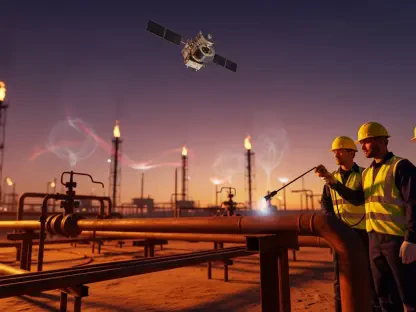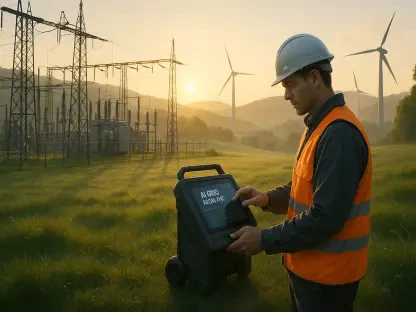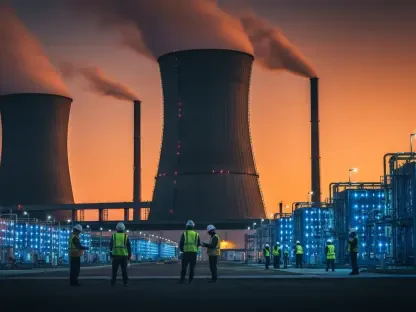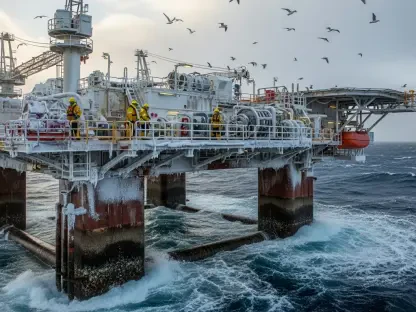I’m thrilled to sit down with Christopher Hailstone, a renowned expert in energy management and renewable energy, whose insights on electricity delivery and grid reliability have shaped critical discussions in the utilities sector. With Australia’s 2035 emissions reduction target at the forefront of global climate conversations, Christopher offers a unique perspective on how the nation can lead in the fight against climate change. In this interview, we explore Australia’s ambitious goals, the actionable steps needed across various sectors, the economic advantages of a strong target, and the challenges of aligning state and federal efforts, all while delving into the broader implications for global leadership in clean energy.
Can you explain why Australia’s 2035 emissions reduction target carries so much weight on the global stage?
Absolutely. Australia’s 2035 target is a pivotal signal of how seriously the country is taking its role in combating climate change. It’s not just about meeting international obligations under agreements like the Paris Accord; it’s about showing leadership, especially to vulnerable neighbors in the Pacific region who are already feeling the impacts of rising sea levels and extreme weather. A strong target demonstrates that Australia is willing to do its fair share, which can inspire other nations to ramp up their own commitments. It also sets a precedent for how resource-heavy economies can transition to cleaner systems without sacrificing growth.
Your analysis suggests Australia could aim for an 85% emissions cut by 2035, which goes beyond the Climate Change Authority’s recommendation. What gives you confidence in this higher ambition?
Our confidence comes from robust modeling, including work by Monash University’s Climateworks Centre and CSIRO, which mapped out pathways showing that an 85% reduction below 2005 levels is achievable with decisive action. The data highlights that if we accelerate efforts in electrification, renewable energy deployment, and innovative agricultural practices, we can meet energy demands while slashing emissions. I believe this is realistic because Australia has immense potential in renewables like solar and wind, and we’re seeing technology costs drop rapidly. The challenge lies in policy alignment and investment, but the foundation is there.
Let’s dive into the specific steps needed to reach such an ambitious goal. How can changes in buildings and energy efficiency contribute significantly?
Electrifying buildings and boosting energy efficiency are game-changers. Think about retrofitting homes and commercial spaces with electric heating and cooling systems powered by renewables instead of gas. Add to that better insulation and smart energy designs, and you’re cutting emissions while reducing energy bills. It’s a win-win. Our modeling shows this sector can deliver substantial reductions if we prioritize incentives for upgrades and set stricter standards for new constructions. It’s low-hanging fruit that also improves quality of life.
What role do electric vehicles play in this transition, and how urgently do we need to scale up their adoption?
Electric vehicles (EVs) are critical for decarbonizing transport, which is a major emissions source. The faster we shift from fossil fuel-powered cars to EVs, the better—ideally, we need a significant portion of new vehicle sales to be electric within the next five to seven years. This requires expanding charging infrastructure, offering financial incentives, and ensuring our grid can handle the increased demand with clean energy. The good news is that EV technology is advancing quickly, and costs are coming down, so with the right push, adoption can snowball.
Turning to industries and agriculture, what innovative solutions are showing the most promise for cutting emissions?
In industry, electrification and green hydrogen are incredibly promising. Hydrogen can replace fossil fuels in heavy processes like steel production, and we’re seeing pilot projects that prove its viability. In agriculture, simple changes like adding algae to livestock feed can reduce methane emissions from cattle, and new fertilizers are cutting down on nitrous oxide. These aren’t futuristic ideas—they’re being tested now with solid results. Scaling them up needs investment and policy support, but they could transform these hard-to-abate sectors.
Economically, how does setting a strong 2035 target benefit Australia in the long run?
A bold target positions Australia as a frontrunner in the global shift to net zero, which is a multi-trillion-dollar opportunity. It attracts investment in clean tech and green commodities like renewable-powered steel, which our trading partners are increasingly demanding. We’re already seeing businesses and investors develop transition plans to capitalize on this shift. By leading now, Australia can secure a competitive edge, create jobs in emerging sectors, and avoid being left behind as the world moves toward sustainability.
One challenge seems to be aligning state and federal efforts. How do the states’ current targets influence the national goal?
The states are setting a strong foundation with their combined targets pointing to a 66-71% national reduction by 2035. That’s a great starting point, as it shows ambition at a local level and pushes the federal government to aim higher. However, without federal leadership to harmonize policies and provide overarching support—like funding for renewables or national grid upgrades—state efforts could hit roadblocks. It’s a partnership; the states are pulling their weight, but federal action is essential to tie it all together.
What do you see as the biggest barriers Australia must overcome to achieve an 85% reduction by 2035?
One major hurdle is the rapid expansion of renewable energy, which requires community buy-in for projects like wind farms and solar arrays. We call this “social license,” and it’s not guaranteed—governments need to ensure host communities see direct benefits, like jobs or lower energy costs. Another barrier is building global demand for green products; Australia can produce them, but we need trade agreements and international cooperation to create markets. Policies are starting to address these issues, but there’s a lot more ground to cover.
Looking ahead, what is your forecast for Australia’s role in global climate leadership if it commits to a strong 2035 target?
If Australia commits to a target like 85%, it could become a renewable energy superpower. We have the resources, the space, and the expertise to lead in clean energy production and export. This would not only bolster our economy but also position us as a model for other nations, showing that a high-emissions economy can pivot successfully. I foresee Australia playing a key role in shaping international climate policies and partnerships, especially in the Asia-Pacific region, driving collective action toward a sustainable future.









